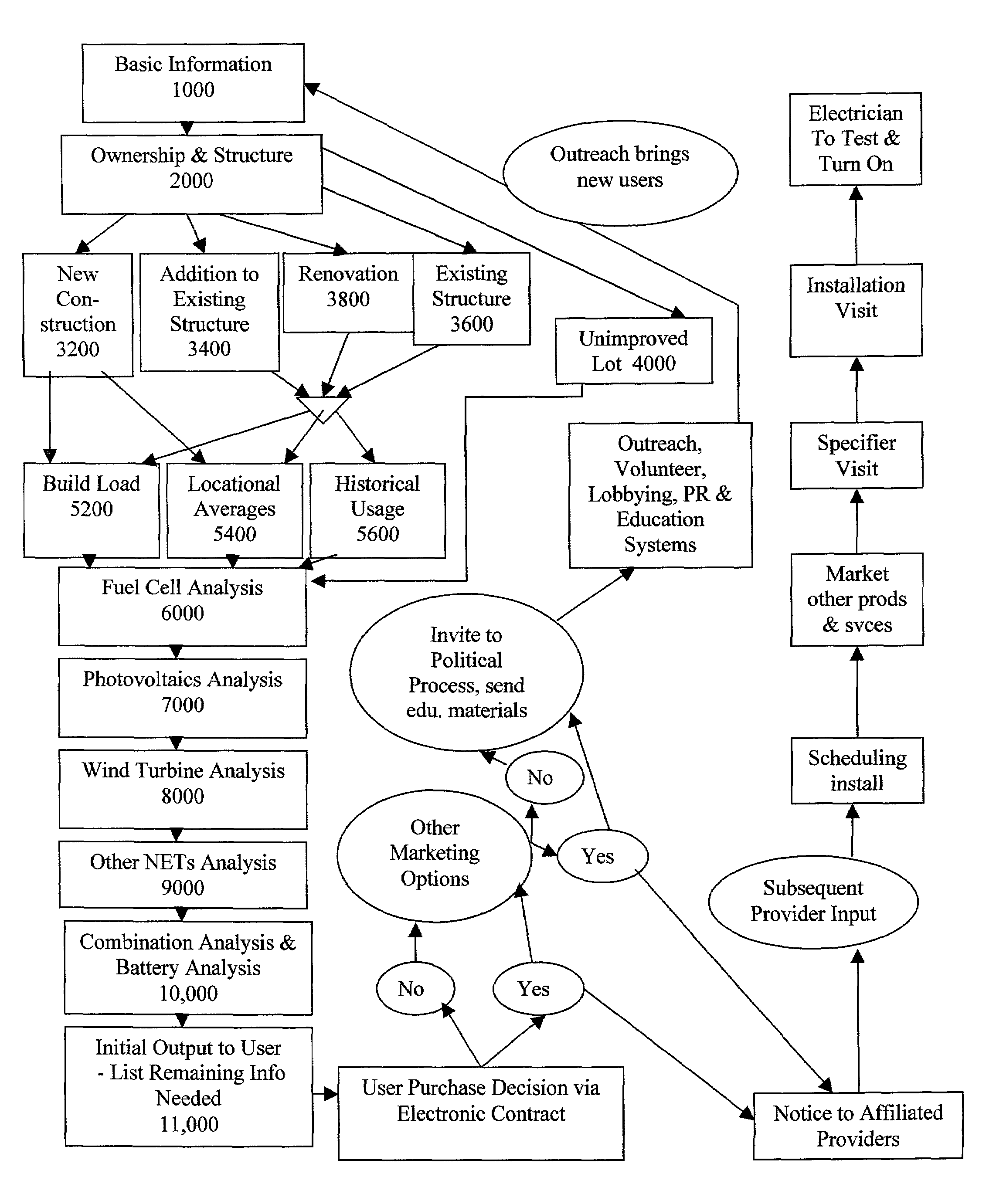Automated new energy technology consulting and demand aggregation system and method
a new energy technology and demand aggregation technology, applied in the field of automatic new energy technology consulting and demand aggregation system and method, can solve the problems of increasing radioactive waste, radioactive waste, etc., and reducing the cost of customer acquisition. , the effect of expanding the system outreach
- Summary
- Abstract
- Description
- Claims
- Application Information
AI Technical Summary
Benefits of technology
Problems solved by technology
Method used
Image
Examples
Embodiment Construction
[0026]An automated New Energy Technology Consulting and Demand Aggregation (“NETCONDA”) software-based system for implementation either via an electronic network such as the Internet (on-line) or off-line is disclosed. An input solicitation system consisting of a series of questions which are posed to a user singly or in groups seriatim or via a form or forms to fill in, obtains specifications and information on an existing or planned, residential, commercial or industrial site or structure's energy needs, usages, costs, and other items. This information is processed and databases are consulted to determine what kind of New Energy Technology sources are available and cost-effective to meet the actual or planned needs and what the costs and financing options are. Then, multiple reports, reminders or communications are generated containing requests for further information, contracts, configuration options, cost estimates, affiliated service provider availability, financing options and...
PUM
 Login to View More
Login to View More Abstract
Description
Claims
Application Information
 Login to View More
Login to View More - R&D
- Intellectual Property
- Life Sciences
- Materials
- Tech Scout
- Unparalleled Data Quality
- Higher Quality Content
- 60% Fewer Hallucinations
Browse by: Latest US Patents, China's latest patents, Technical Efficacy Thesaurus, Application Domain, Technology Topic, Popular Technical Reports.
© 2025 PatSnap. All rights reserved.Legal|Privacy policy|Modern Slavery Act Transparency Statement|Sitemap|About US| Contact US: help@patsnap.com


